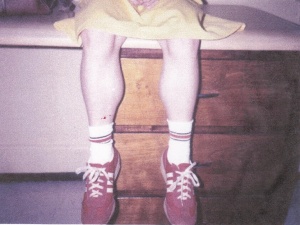Pseudohypertrophy
Enlargement of a diseased muscle due to replacement by fat and fibrous tissue. With true hypertrophy there is an increase in muscle fiber size or number. Pseudohypertrophy occurs in some neuromuscular disorders, especially in the dystrophinopathies - Duchenne’s and Becker’s muscular dystrophy. With progression of the myopathic process the muscle becomes infiltrated and replacement by fat and fibrous tissue. With true muscle hypertrophy, the muscle feels firm; with pseudohypertrophy the muscle appears enlarged but feels doughy or rubbery. Pseudohypertrophy occurs in other neuromuscular conditions as well, including juvenile proximal spinal muscular atrophy (Kugelberg-Welander disease), Kennedy’s disease, central core disease, centronuclear myopathy, limb girdle dystrophy, acid maltase deficiency, polymyositis, granulomatous myositis, facioscapulohumeral dystrophy, and inclusion body myositis.
